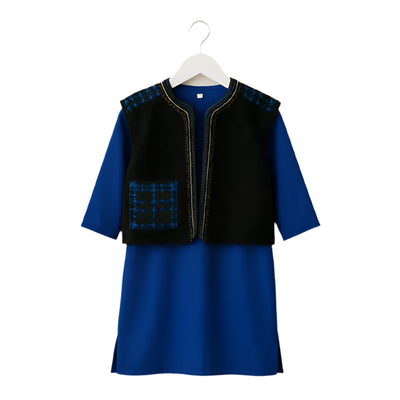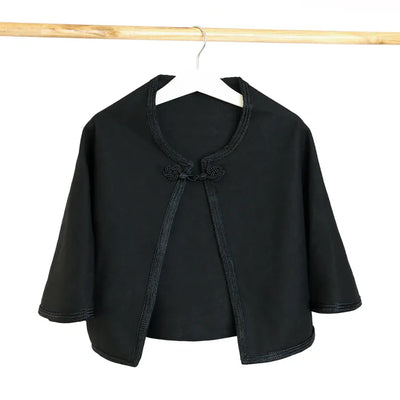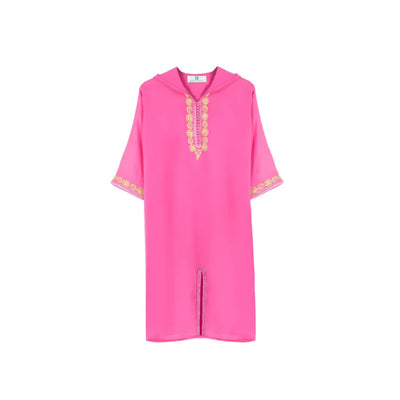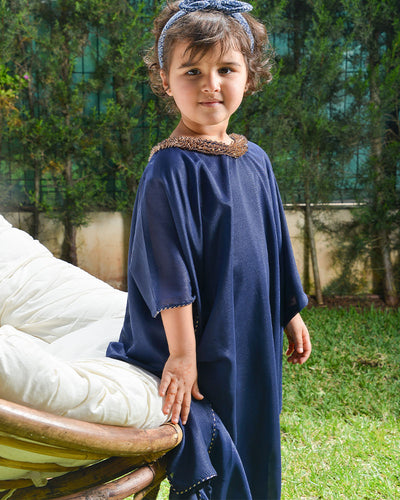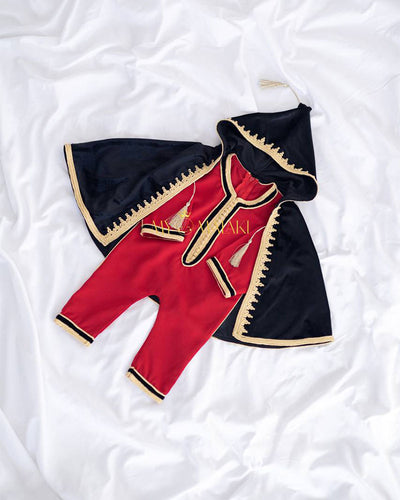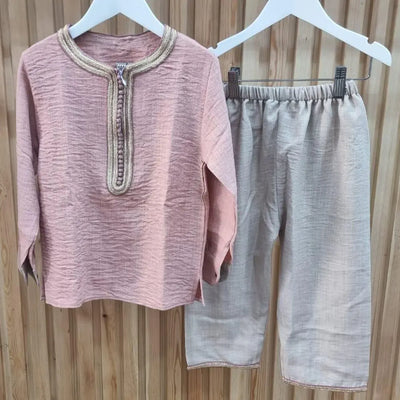Traditional Outfits
-
Traditional Girls' Outfit – Blue Dress & Black Vest
950.00 DHUnit price /Unavailable -
Mami Cami Jabadour Two Piece for Girls - Pink & Beige
379.00 DHUnit price /Unavailable -
Sleeveless Caftan Dress for Girl - Night Black
From 500.00 DHUnit price /Unavailable -
Sleeveless Caftan for Girl - Red
From 500.00 DHUnit price /Unavailable -
Sleeveless Caftan for Girl - Azure Royal Blue
From 500.00 DHUnit price /Unavailable -
Jabador with Selham for Boy - Burgundy
From 600.00 DHUnit price /Unavailable -
Jabador with Vest for Boy - Black
From 400.00 DHUnit price /Unavailable -
Jabador with Vest for Boy - Deep Aqua
From 400.00 DHUnit price /Unavailable -
Polka Dot Caftan Dress for Girl - White
From 600.00 DHUnit price /Unavailable -
Kaftan Dress for Girl with Sleeves - Royal Azure Blue
From 500.00 DHUnit price /Unavailable -
Caftan Dress for Girl with Sleeves - Red
From 500.00 DHUnit price /Unavailable -
Sleeveless Caftan Dress for Girl - Bright Black
From 750.00 DHUnit price /Unavailable -
Caftan Dress for Girl - Carmine
From 600.00 DHUnit price /Unavailable -
Caftan Dress for Girl - Blue Bud
From 600.00 DHUnit price /Unavailable -
Kaftan Dress for Girl with Sleeves - Night Black
From 500.00 DHUnit price /Unavailable -
Kaftan Dress for Girl with Sleeves - Deep Aqua
From 500.00 DHUnit price /Unavailable -
Mami Cami Boy's Jabadour - Pastel Green
From 329.00 DHUnit price /Unavailable -
Mami Cami Boy's Jabadour - Sky Blue
From 329.00 DHUnit price /Unavailable -
From 350.00 DHUnit price /Unavailable
-
From 350.00 DHUnit price /Unavailable
-
From 400.00 DHUnit price /Unavailable
-
From 400.00 DHUnit price /Unavailable
-
From 400.00 DHUnit price /Unavailable
-
From 400.00 DHUnit price /Unavailable
-
From 400.00 DHUnit price /Unavailable
-
Girls' Caftan Dress - Pink Fushia
From 500.00 DHUnit price /Unavailable -
Girls' Caftan Dress - Blue Star
From 500.00 DHUnit price /Unavailable -
Girls' Caftan Dress - Cherry Red
From 500.00 DHUnit price /Unavailable -
Sleeveless Girl's Caftan Dress - Deep Aqua
From 500.00 DHUnit price /Unavailable -
Girls' Caftan Dress - Beige Bud
From 500.00 DHUnit price /Unavailable -
Jabador with Selham for Boy - Green
From 600.00 DHUnit price /Unavailable -
Jabador with Selham for Boy - Viride
From 600.00 DHUnit price /Unavailable -
Jabador with Selham for Boy - Navy Blue
From 600.00 DHUnit price /Unavailable -
935.00 DHUnit price /Unavailable
-
Boy's Traditional Vest in Soi - Black
1,210.00 DHUnit price /Unavailable -
Double-Sided Crepe Djellaba with Blue Beads
From 550.00 DHUnit price /Unavailable -
From 605.00 DHUnit price /Unavailable
-
715.00 DHUnit price /Unavailable

